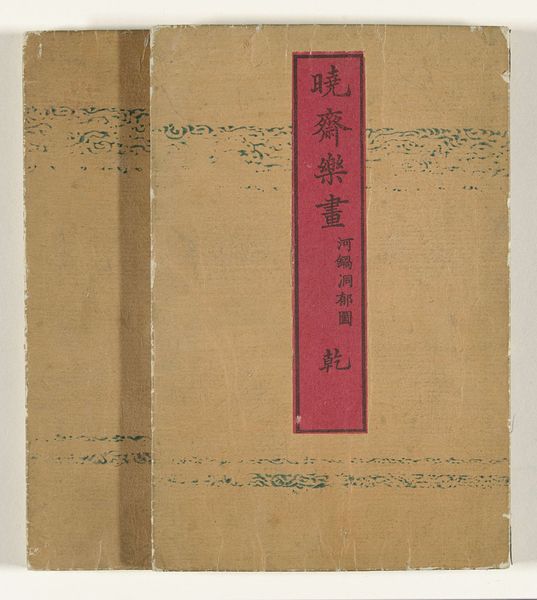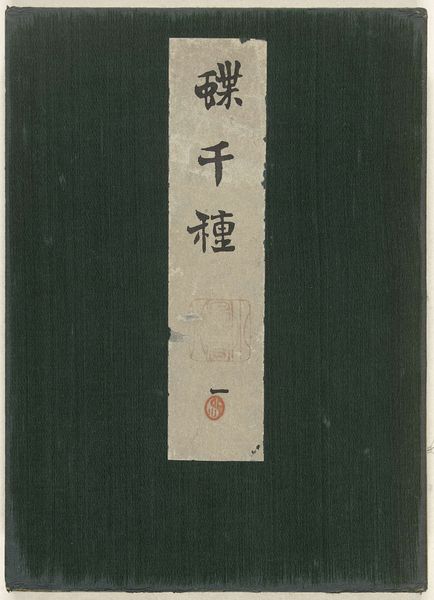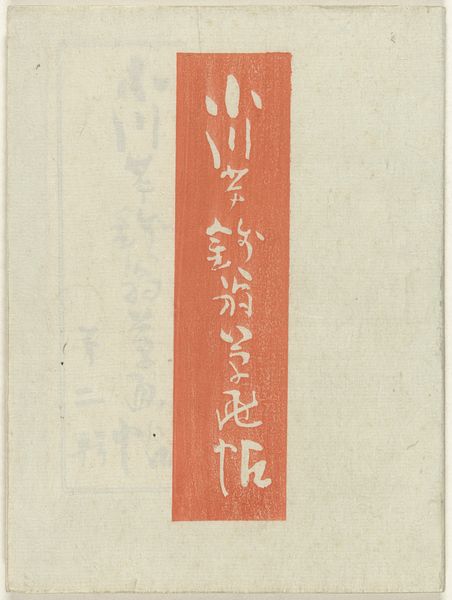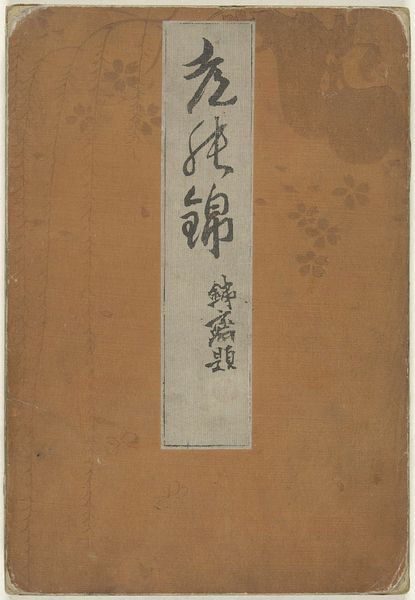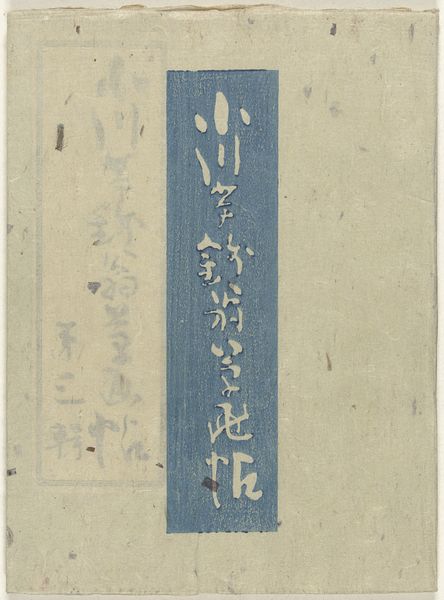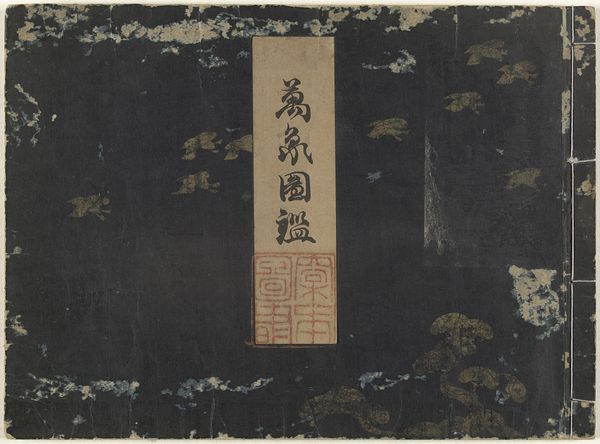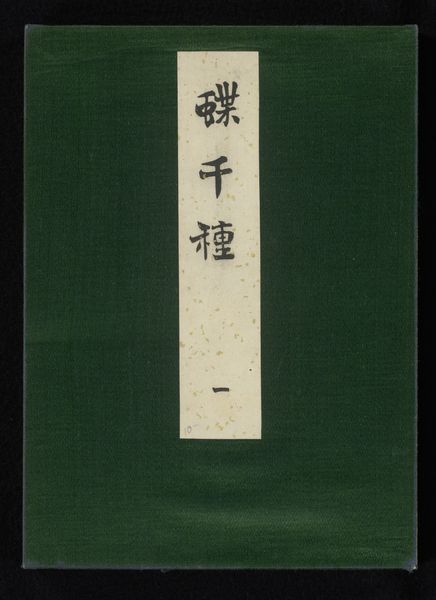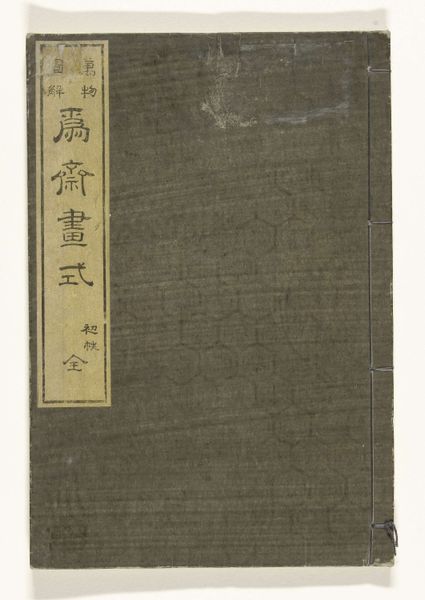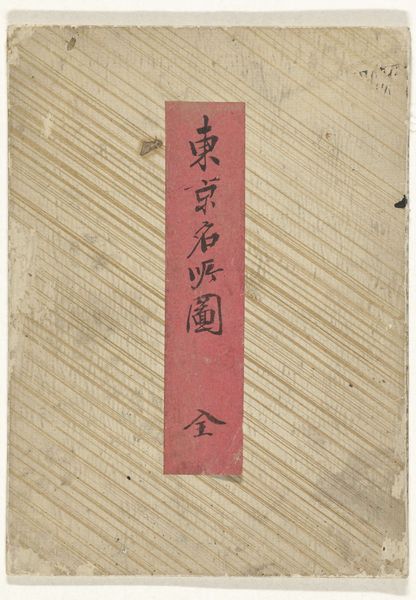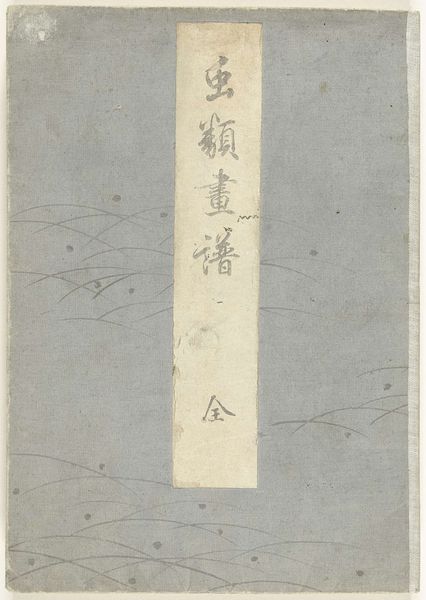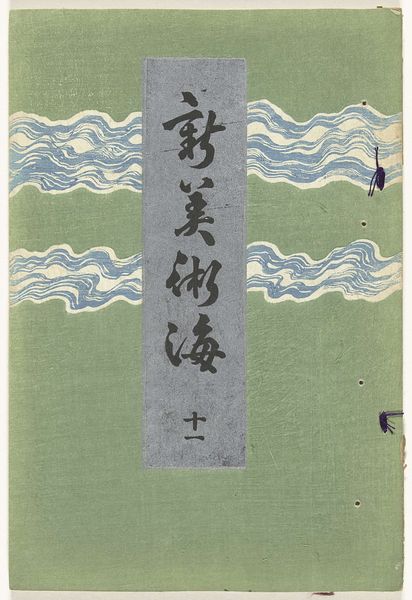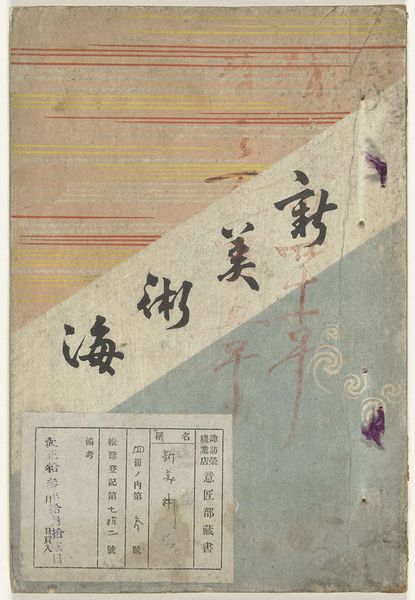
Dimensions: height 221 mm, width 146 mm
Copyright: Rijks Museum: Open Domain
Editor: This is "Kyosai's tekenplezier" from 1881 by Kawanabe Kyosai. It’s ink and watercolor on paper and, well, it seems deceptively simple, almost like an instruction manual cover. What is its significance? Curator: Deceptive indeed! As a materialist, I see the layering of ink and watercolor not just as descriptive elements, but as products of specific labor and socio-economic circumstances. What paper was available to Kyosai? What were the processes for ink and color creation in late 19th-century Japan? These things underpin the work. Editor: I never considered the materiality like that before, just focused on the visual aspects. So, the production impacts its interpretation? Curator: Absolutely. Look at the waves at the top and bottom. It's an aesthetic choice, but was it made by someone else in the workshop, thus blurring artistic authorship? Consider, too, the context. The rising popularity of ukiyo-e prints catered to a burgeoning merchant class and the global export market. How did this shift affect artistic production and standards, the type of work available, and the remuneration artists received for it? Editor: That really recontextualizes everything! Suddenly, I see not just art but a product of labor within a complex economic system. Curator: Precisely. And in focusing on that we can then also begin to ask to what extent is *tekensplezier,* literally "drawing pleasure" complicit with this changing mode of production. Was this image part of that cycle, perhaps a playful attempt to disguise some kind of instruction? Who was being afforded this pleasure? Editor: So, beyond the image itself, the materials and production methods reflect cultural and economic factors. This gives it much more depth. Curator: Exactly. And remembering these aspects shifts our perception, understanding and critique of this artwork, revealing it to be much more complex than simply what is shown. Editor: I see it now! Looking at art from a materialist perspective really highlights those often-invisible layers of production and consumption.
Comments
No comments
Be the first to comment and join the conversation on the ultimate creative platform.
